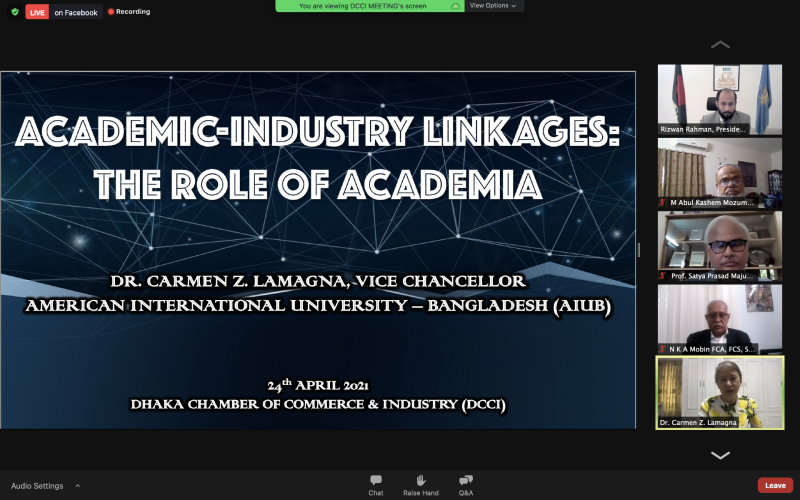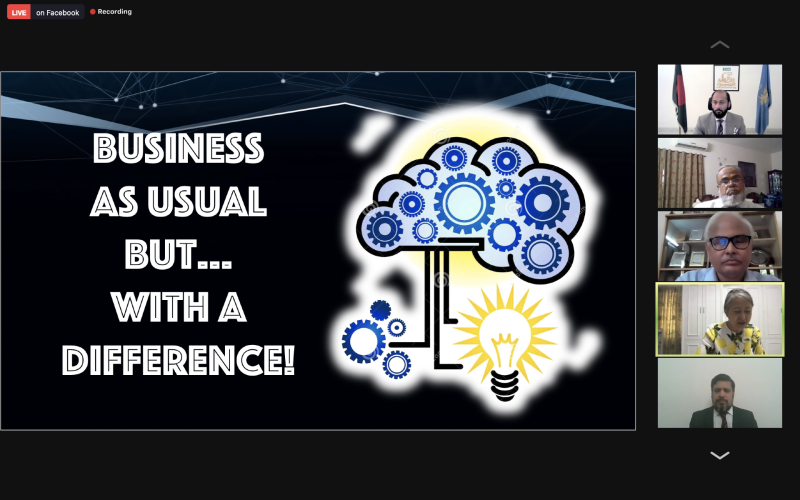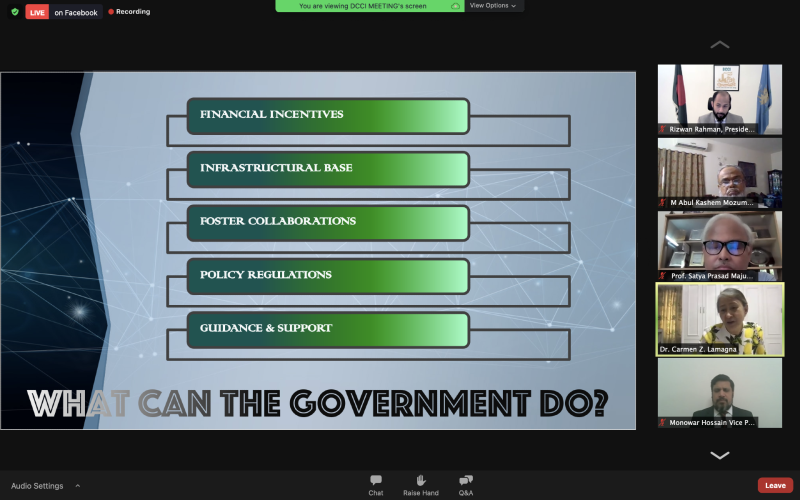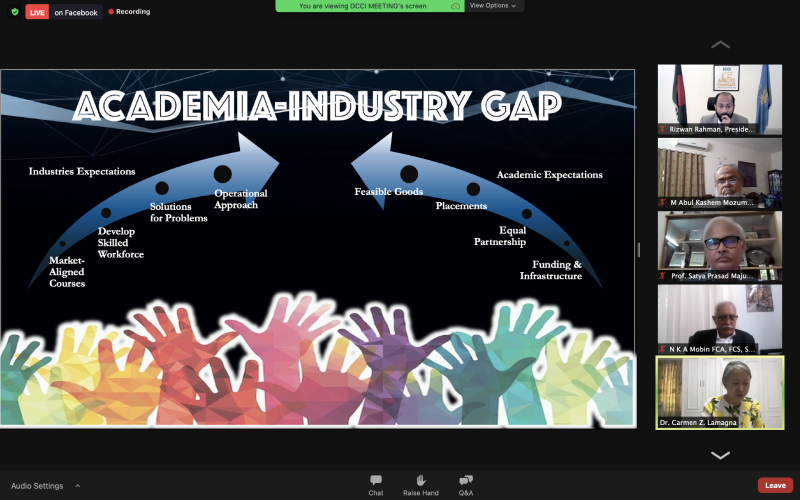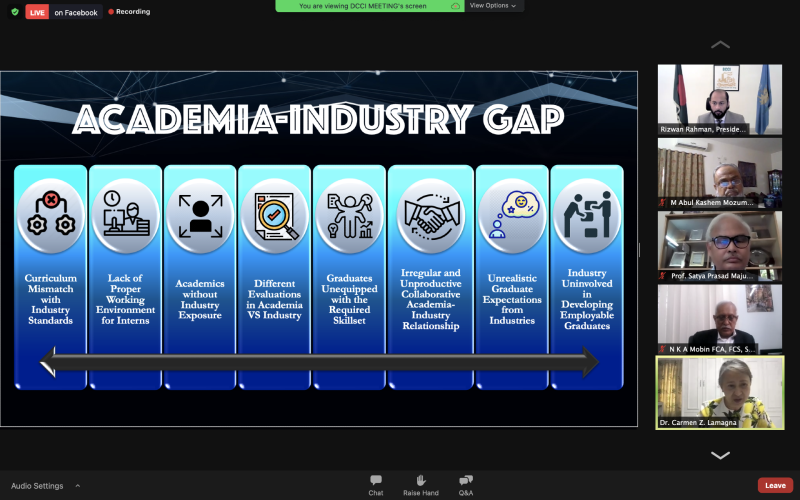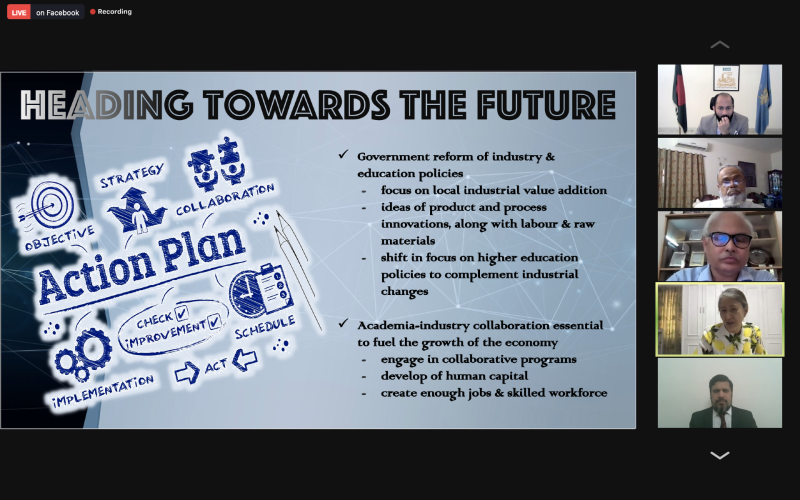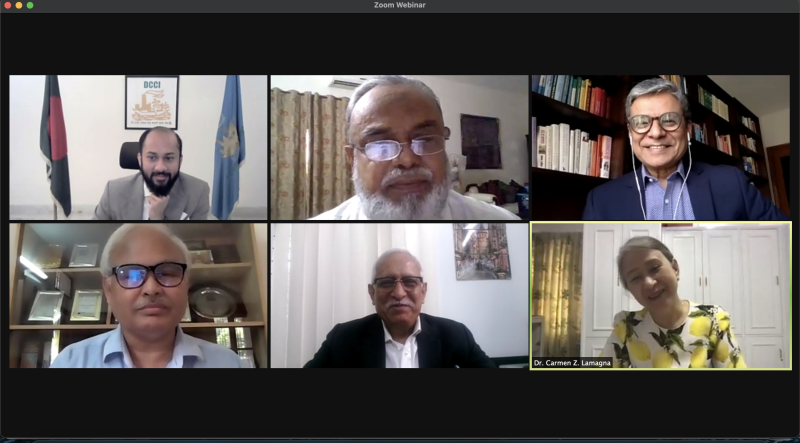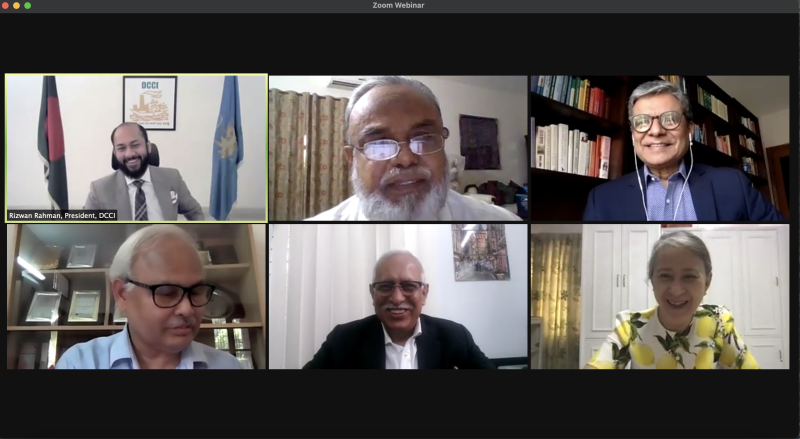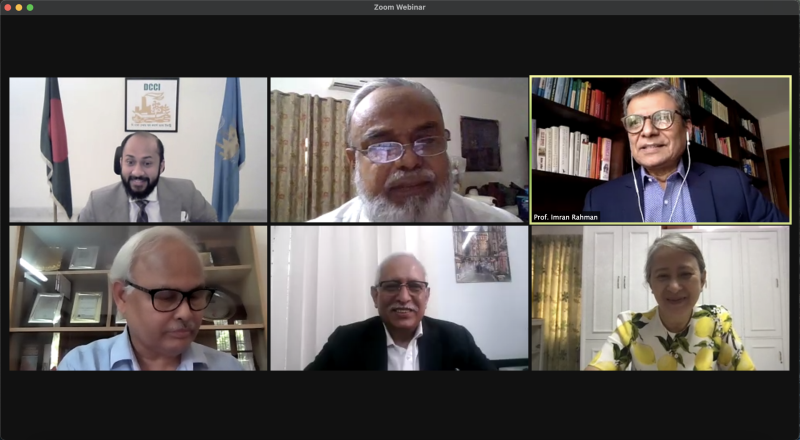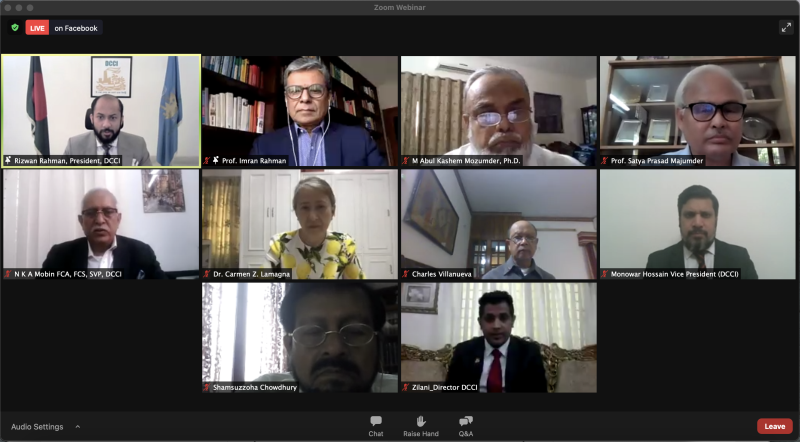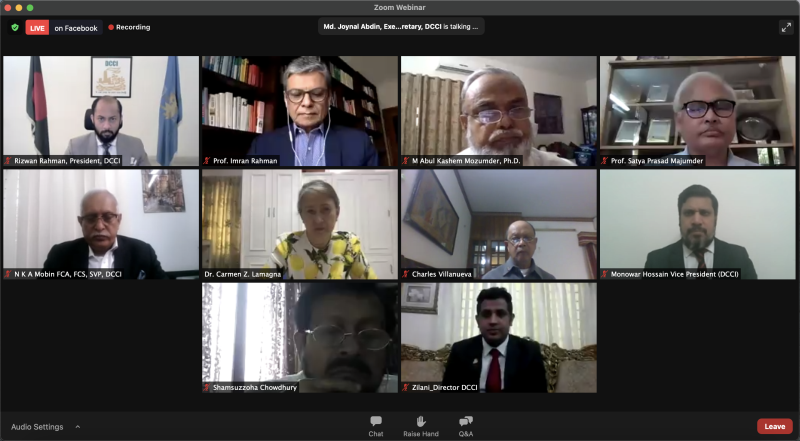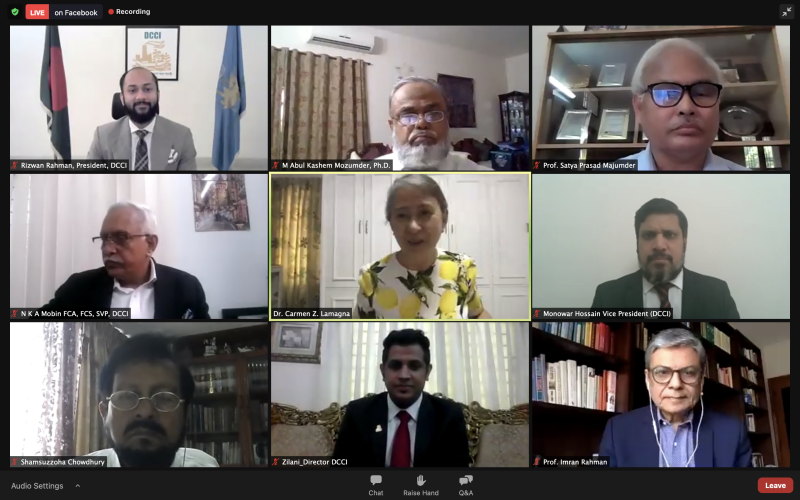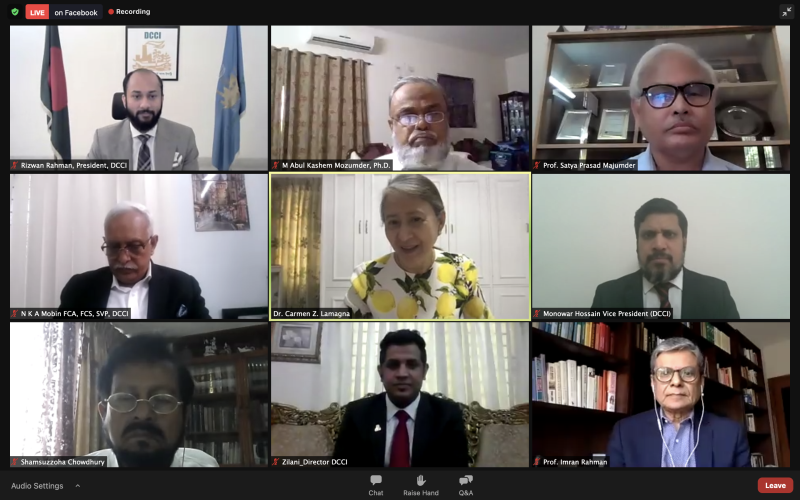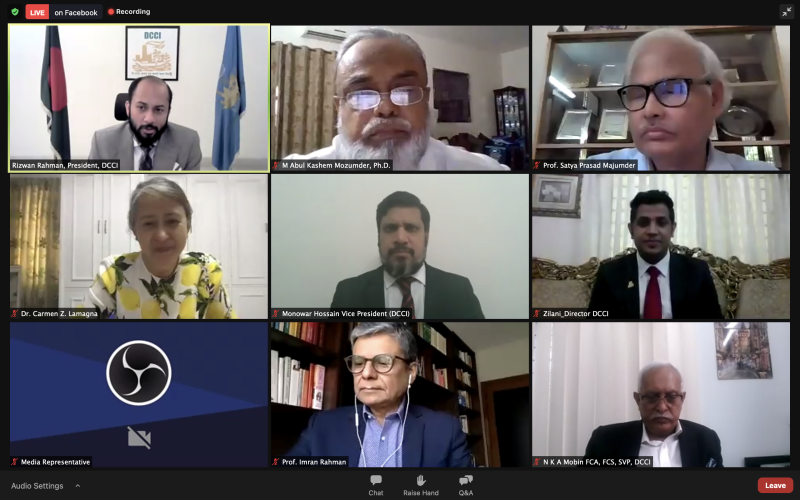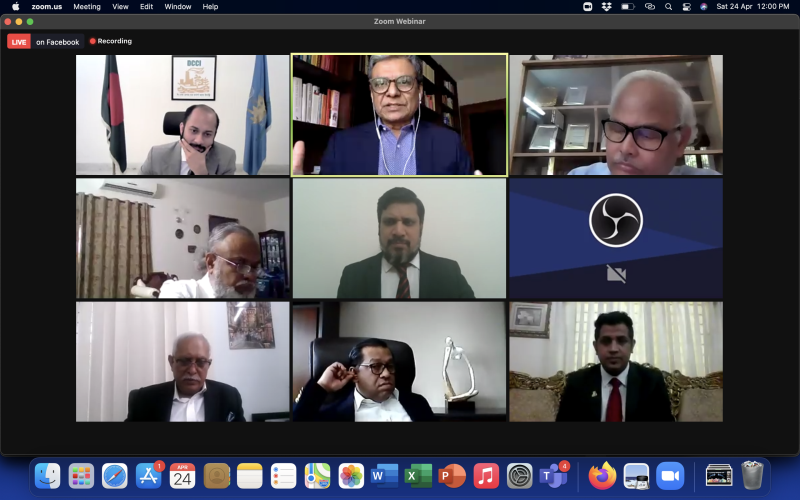In today’s world, we are preparing students for jobs and technologies that don’t yet exist, in order to solve problems we are not aware of yet. And education being the catalyst for socio-economic mobility, it further emphasizes the significance of industry-academia linkages. The objectives of both are reflective of one another – innovation, development, and growth.
As societies transition from being largely industrialized to becoming increasingly information-based, characterized by expanding globalization that prioritizes services and intangibles with cohesive networks and digital technologies, more and more constructive collaborations between higher education and the private sector are emerging through multidimensional educational partnerships. And that is the very notion with which the Dhaka Chamber of Commerce & Industry (DCCI) organized a webinar on “Industry-Academia Linkages – Role of Academia”. On the 24th of April 2021, together with an expert panel of the Vice Chancellor of the American International University – Bangladesh (AIUB), Dr. Carmen Z Lamagna, the Vice Chancellor of the Bangladesh University of Engineering & Technology (BUET), Prof. Satya Prasad Majumder, the Pro-Vice Chancellor of the Bangladesh University of Professionals (BUP), M Abul Kashem Mozumder, Ph.D., and the Special Advisor to the Board of Trustees & the Dean of the University of Liberal Arts Bangladesh (ULAB), Prof. Imran Rahman, and moderated by the President of DCCI, Mr. Rizwan Rahman, the interactive session focused on the scopes of improving the existing industry-academia linkages.
Dr. Lamagna focused on how industry-academia linkages enable universities to extend beyond teaching and research towards community engagement, while industries can ensure not just skilled workforce but also creative solutions and lucrative market opportunities. In this rapidly changing world, this is becoming recognized as a pathway to sustainability, funding, knowledge transfer and access to resources. Reviewing AIUB’s approach towards integrating industrial linkages, Dr. Lamagna underlined the prevalent skills gap and how the triad of academia, industry, and government can work towards bridging it. Each panelist put forward their ideas on the challenges industry-academia linkages face as well as strategies that can strengthen the collaborative partnerships further, where not just the industry or academia, but even the governing bodies have important roles to play. The discussion highlighted the need for emphasizing curriculum development, encouraging multidisciplinary research, and investing in skills-oriented resources.
Partnerships are becoming a commonly used tool for the engagement of universities. Traditionally, we have emphasized a one-way process through which the university transfers its expertise to key constituents. The engaged university pursues partnerships, two-way streets defined by mutual respect among the partners for what each can contribute to the problem-solving process. Too often in universities and industries do not take time to learn. This is particularly true when it comes to the building, nurturing, and terminating of partnerships that could be potentially productive. We need to take time to identify what contributed to the success, or resulted in the future, and then to develop systems for passing this knowledge along to new partnership participants.
Building the partnering skills of our faculty should be a goal of continuing professional development programs. We have much to learn about building responsive, productive, and sustainable partnerships. Together, universities and industries can build better partnerships by becoming more like learning organizations, using partnerships as learning opportunities. Research and innovation outputs generated from these projects are converted into tangible and impactful product and services for socio-economic developments. Governments can help universities protect data and intellectual property so that universities can start commercializing outputs of research undertaken. Private sector is looking for skilled competent graduates. One of the contributions they can make is to establish strong research units so that high quality industrial attachments and on-job training can be derived from higher institutions of learning in communities. But in order to achieve that, they need to start working together.
